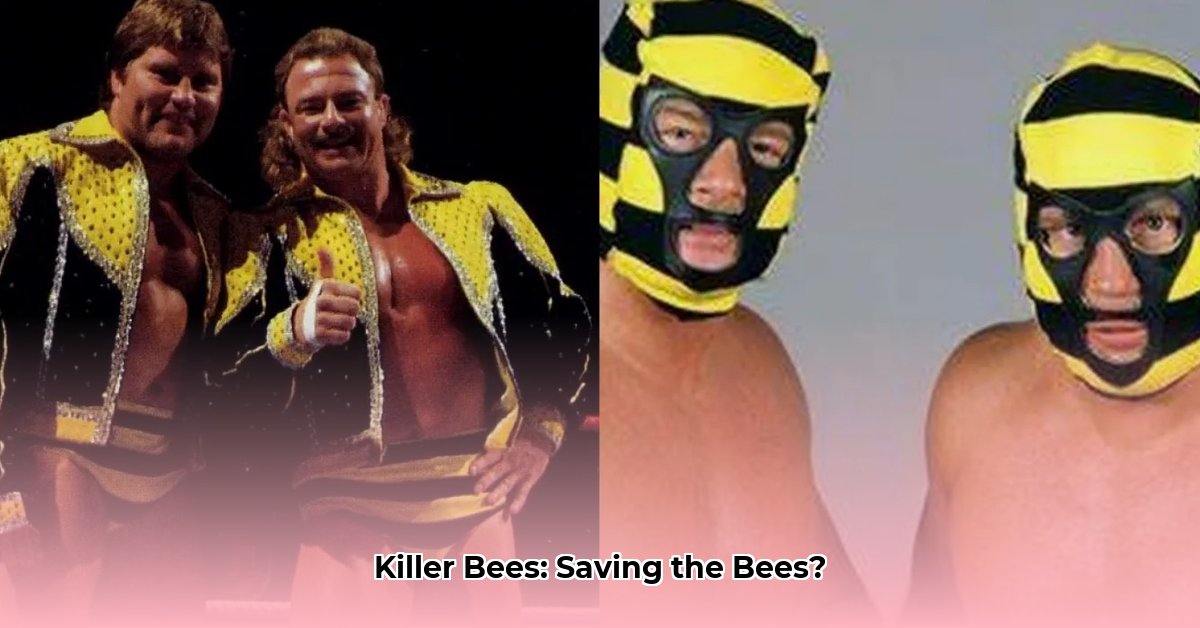
Killer Bees: A Stinging Paradox
Ag shame, you've heard the stories, right? About those "killer bees" – the ones that sound like something straight out of a horror flick. But the truth about Africanized honeybees (Apis mellifera scutellata) is far more nuanced than pure fear. These bees, known for their aggressive defence, also boast a remarkable resistance to Colony Collapse Disorder (CCD), the disease decimating honeybee populations globally. This presents a real dilemma: how can we harness their impressive survival skills while mitigating their famously feisty nature? It's a complex issue, a bit like having a powerful medicine with some serious side effects.
Understanding the Africanized Honeybee
The term "killer bee" conjures up images of terrifying swarms. While their stings aren't inherently more venomous than other bees, their aggressive defence mechanisms, involving massive attacks from hundreds of thousands of bees (compared to the tens of thousands of European honeybees), are cause for concern. A large swarm could definitely be dangerous. But here’s the twist: Africanized honeybees exhibit superior resistance to CCD, a critical factor given the vital role bees play in global food production. Isn't it a funny old world?
A Brief History and a Whole Lotta Buzz
The story begins in 1957, when a few African queen bees escaped a Brazilian research facility. These bees, hardened by the tough African climate, hybridized with local European honeybees, creating a super-adaptable, yet highly defensive breed. Their spread continues to this day, making understanding and managing them a global priority.
The Science Behind Their Resilience
Research suggests superior grooming behaviour plays a crucial role in their CCD resistance. Africanized honeybees are incredibly efficient at removing Varroa mites – tiny parasites responsible for much of the CCD problem. This, combined with other genetic factors, allows them to thrive where many other bees struggle. This resilience is precisely why ongoing research is so vital. Can we isolate the genes responsible for this resistance and incorporate them into less aggressive strains? That’s the million-rand question.
Weighing the Risks and Rewards: A Balancing Act
Managing the risks associated with Africanized honeybees requires careful consideration. The following table provides a glimpse into the complexities of the situation:
| Factor | Probability of Occurrence | Severity of Impact | Overall Risk Level | Mitigation Strategies |
|---|---|---|---|---|
| Aggressive Behaviour | High | High | High | Selective breeding, public education campaigns |
| Loss of CCD Resistance | Moderate | Moderate | Moderate | Ongoing research, environmental monitoring |
| Unexpected Ecological Effects | Low | High | Moderate | Thorough environmental impact assessments |
| Public Misunderstanding/Fear | High | Moderate | High | Targeted communication strategies |
This isn't just a scientific problem; it's a socio-economic one requiring collaborative efforts from beekeepers, scientists, government, and the public.
A Path Forward: Short-Term and Long-Term Solutions
The goal is to harness the positive attributes of Africanized honeybees while minimizing the risks. Short-term solutions include targeted breeding programs, public education, and improved handling techniques for experienced beekeepers. Long-term strategies focus on developing less aggressive, yet equally resilient bee strains, complemented by robust regulatory frameworks.
The Africanized honeybee presents a complex challenge, highlighting the delicate balance between human safety and environmental sustainability. The story is far from over; future chapters depend on scientific advancements and informed decision-making.
Safely Managing Africanized Honeybee Colonies for Honey Production
Key Takeaways:
- Africanized honeybees are highly aggressive, necessitating expert management.
- Prevention through habitat modification is crucial.
- Safe honey production requires specialized knowledge and protective gear.
- AHBs compete with native bees, emphasizing sustainable practices.
- Collaboration among stakeholders (beekeepers, researchers, government) is vital.
Understanding the Threat
These bees, while not inherently malicious, are highly defensive. Their aggressive nature poses a risk, but their pollination abilities are undeniable. The challenge lies in finding a balance.
Prevention: A Proactive Approach
Preventing AHB colonization is akin to fire prevention – early intervention is key. Regular inspections, sealing potential nesting sites (gaps in buildings, debris removal), all form the bedrock of prevention, particularly in rural settings.
Safe Honey Production: Expert Management
Working with AHBs demands specialized skills and protective equipment. Inexperienced individuals should not attempt this; only trained professionals should handle these colonies.
Mitigation: Dealing with Established Colonies
If a colony is discovered, contact a professional pest control operator experienced in AHB removal. Attempting removal yourself is incredibly dangerous. Humane removal, prioritizing environmental impact, is crucial.
Environmental Considerations: Biodiversity Impact
AHBs compete with native bee populations, impacting biodiversity. Sustainable agricultural practices that support natural habitats are critical to mitigate these effects.
Collaborative Solutions: Working Together
Managing AHBs requires a collaborative approach. Public awareness campaigns, research aimed at developing improved management strategies, and the active participation of beekeepers, government agencies, and environmental organizations are essential components of a comprehensive solution.